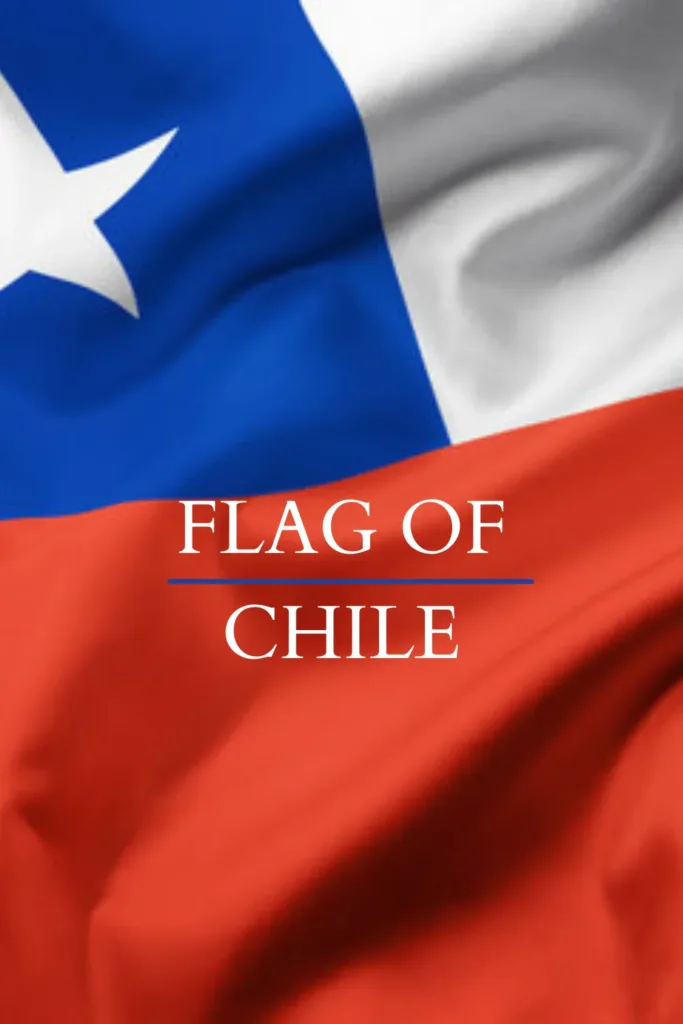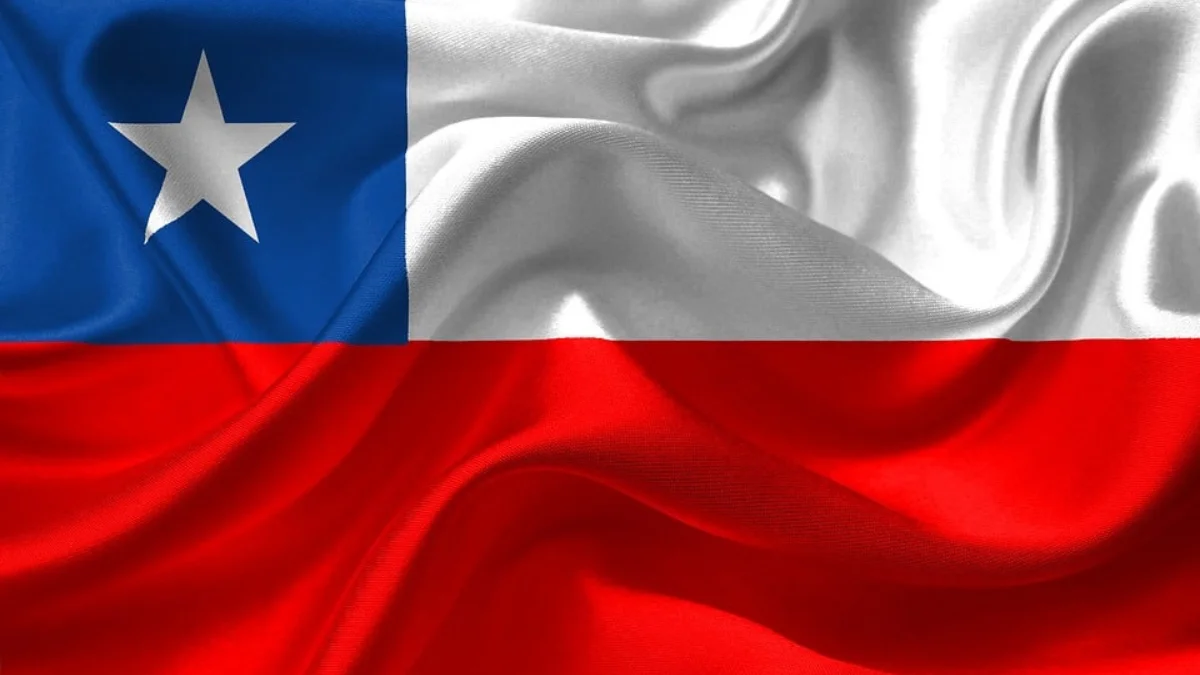Flag of Chile
The Chilean flag, adopted on October 18, 1817, boasts a distinctive design comprising two horizontal bands of equal height in white and red. The canton, positioned in the upper left corner, features a blue square matching the height of the white band. Within this blue square resides a central white five-pointed star, a characteristic that has earned the flag the moniker “La Estrella Solitaria” (The Lone Star) in Spanish.
Design and Symbolism
The official specifications for the construction of the current flag of Chile are outlined in Supreme Decree No. 1,534 of the Ministry of the Interior, promulgated in 1967.
This decree, which addresses the use of national emblems, systematises and consolidates various laws and regulations related to the flag.
Additional laws, such as Law No. 2,597 of 11 January 1912, focusing on the colours and proportions of the national flag, and Supreme Decree No. 5805 of the Ministry of the Interior, published on 26 August 1927, which established the size of the national flag for use in buildings and public offices, contribute to the comprehensive framework.
As per the decree, the flag adheres to a 3:2 ratio of length to width, with a horizontal division into two equal-sized bands.
The lower section is dedicated to the colour red. At the same time, the upper region is further divided into a blue square and a white rectangle, their lengths maintaining a proportional relationship of 1:2.
The star is positioned at the centre of the blue canton, constructed within a circle whose diameter is half the side length of the canton.
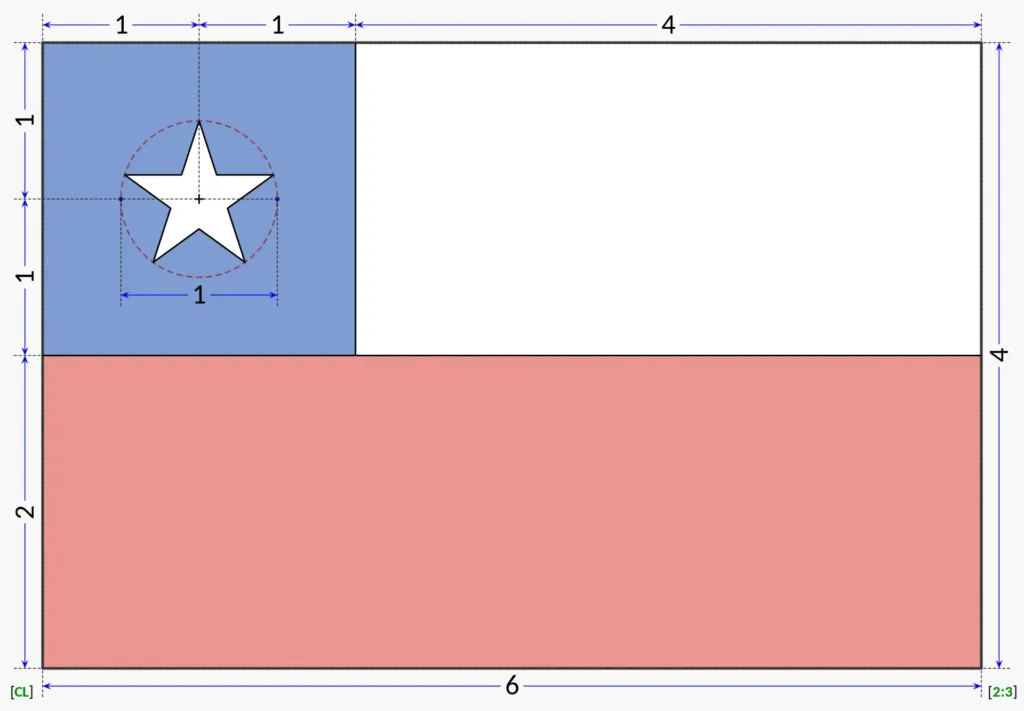
The colours in Chile’s flag each carry symbolic significance:
While precise colour shades are not explicitly stipulated by law, the designated colours are officially denoted as “Turqui blue,” “white,” and “red.”
White
The colour white represents the snow speaks of the Andes and symbolises the purity and lofty aspirations of the People of Chile.
Red
The Colour red represents the bloodshed and sacrifices made during the Independence and the courage and determination of the Chilen people.
Blue
The colour blue represents the vast sky and the Pacific Ocean, symbolising Chile’s deep maritime connection and acknowledgement of the importance of the Ocean.
The Lone Star
The star represents a guide to progression and honour and the brighter future of Chile.
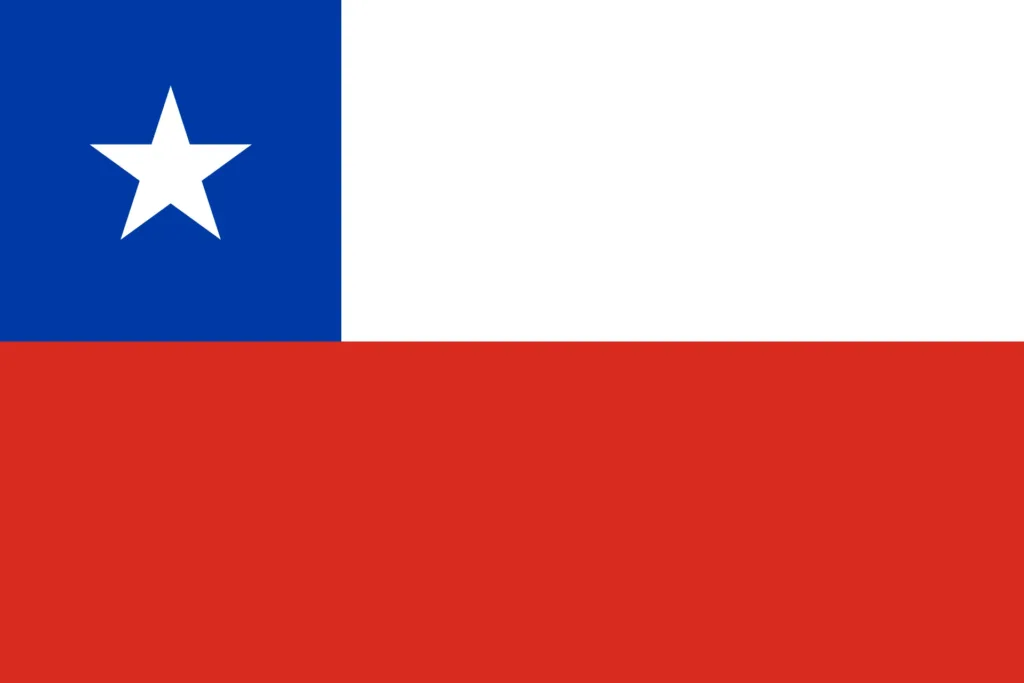
Brief History of Chile
The history of the flag of Chile is deeply intertwined with the country’s journey to independence from Spanish rule.
Before the struggle for independence, Chile used the Spanish flag as it was a Spanish colony. The desire for freedom and independence gained momentum in the early 19th century, inspired by similar movements across South America.
During the initial phase of the independence movement, a flag known as the “Patria Vieja” (Old Fatherland) was adopted. This flag featured three horizontal stripes of blue, white, and yellow, with a white square in the upper left corner. It symbolized the desire for independence and reflected the influence of the French tricolour.
After the defeat of the independence forces and the establishment of royalist rule, the original flag fell out of use. The Spanish flag was reinstated during this period, symbolizing the return to colonial rule.
1817 following the victory at the Battle of Chacabuco, the need for a new national flag became apparent. A design resembling the current flag emerged, featuring two horizontal bands of white and red, with a blue square in the upper left corner. The blue square contained a white five-pointed star, initially known as the “July Star.”
On February 12, 1818, Chile officially declared its independence, and the new flag was hoisted for the first time. The symbolism of the colours—white for purity and the Andes, red for bloodshed and sacrifice, and blue for the sky and the Pacific Ocean—was officially recognized.
Over the years, there were adjustments to the design of the star in the blue square. The size and position of the star were modified in various iterations.
The modern design of the Chilean flag, with the lone white star centred in the blue square, was officially established in 1854. This design has remained relatively unchanged since then.
The Chilean flag stands as a powerful symbol of the nation’s history, unity, and resilience.
The Flag of the President of Chile
The Flag of the President of Chile is the national flag with the coat of arms at the centre.
Find out more about the Flag of the President of Chile
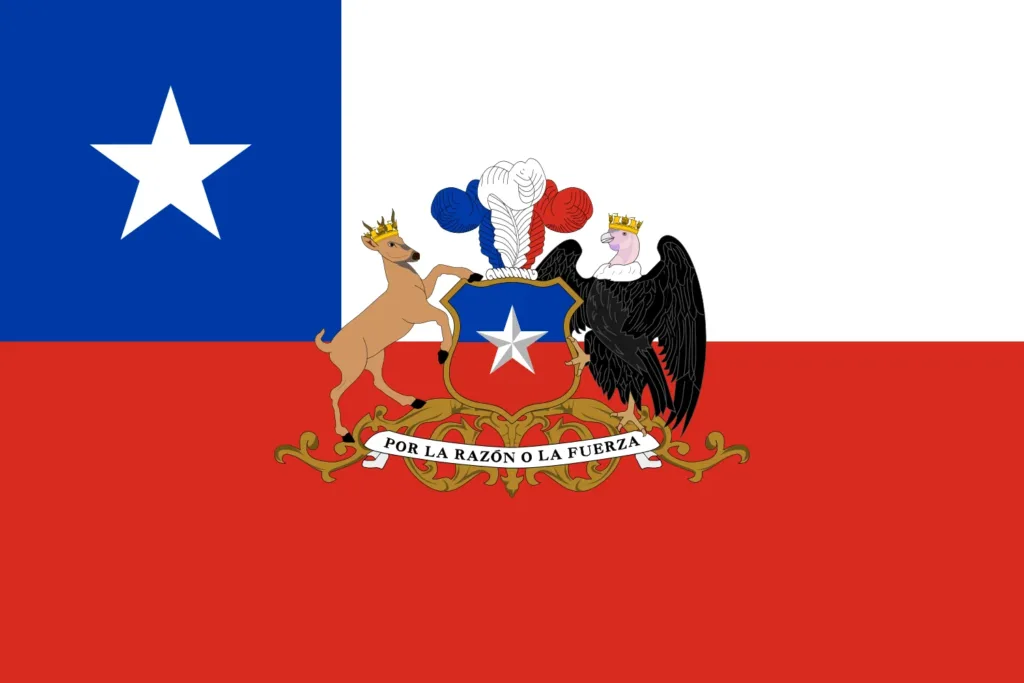
The Flag of the Chilean Navy
The Flag of the President of Chile is the national flag with the coat of arms at the centre.
Find out more about the flag of the Chilean Navy

The Flags of the Regions of Chile
Chile has diverse landscapes and vibrant cultures and is divided into 16 regions, each with its own unique identity and history.
Find out more about the Flags of the Regions of Chile
The Flags of the Mapuche Territories
The Mapuche flags serve as a distinctive emblem and symbol for both the Mapuche Nation and various Mapuche communities and organizations in Chile and Argentina.
Find out more about the Flags of the Mapuche Territories
